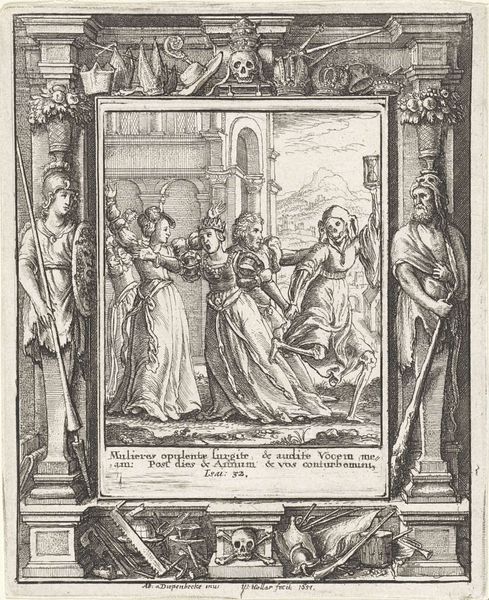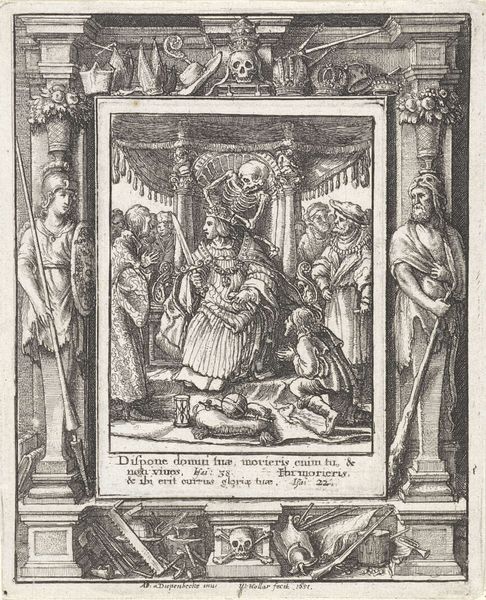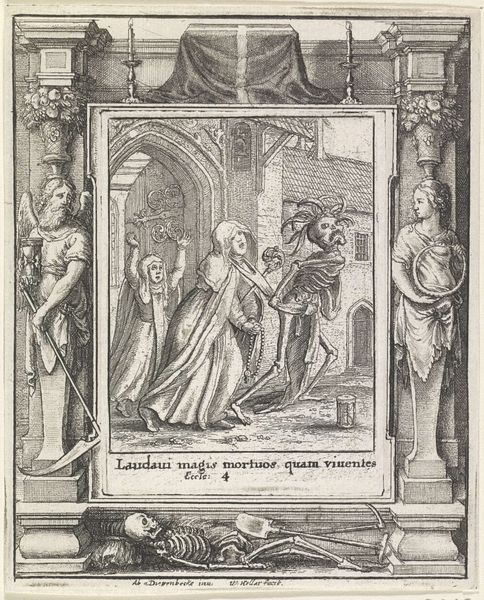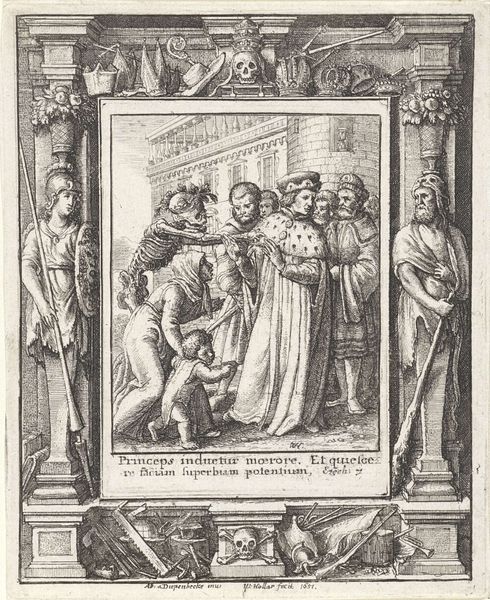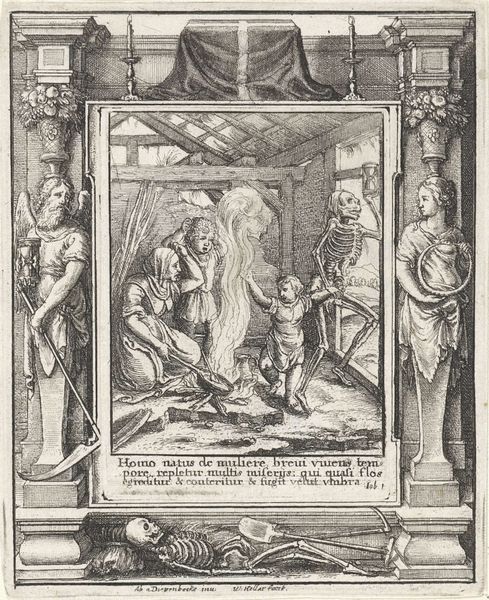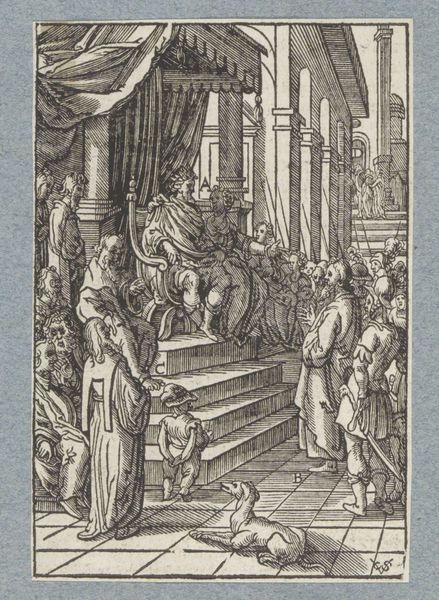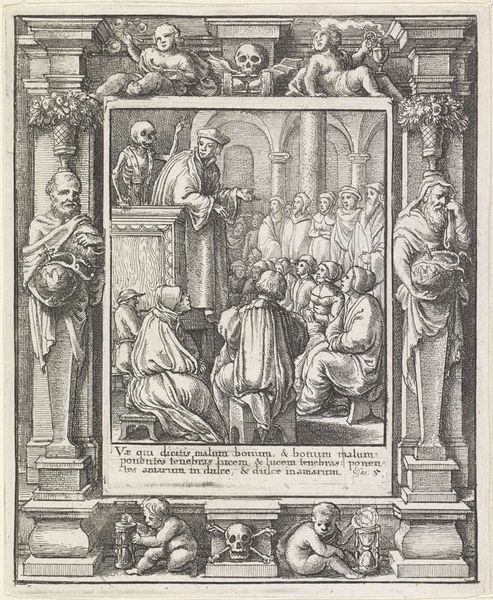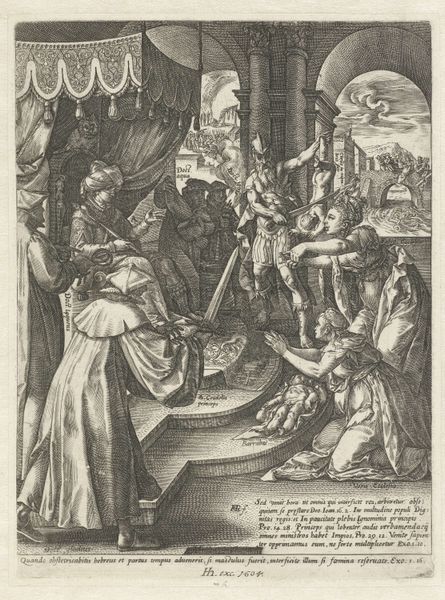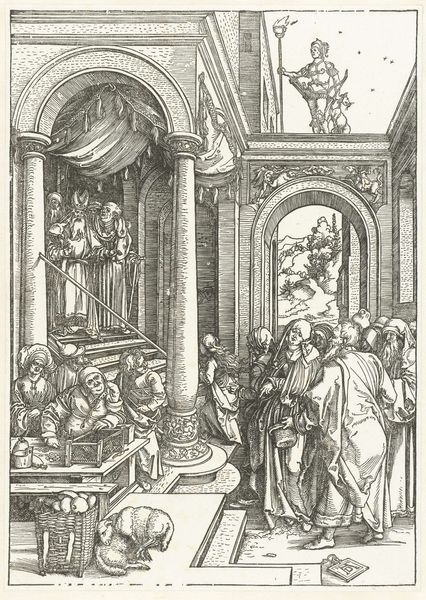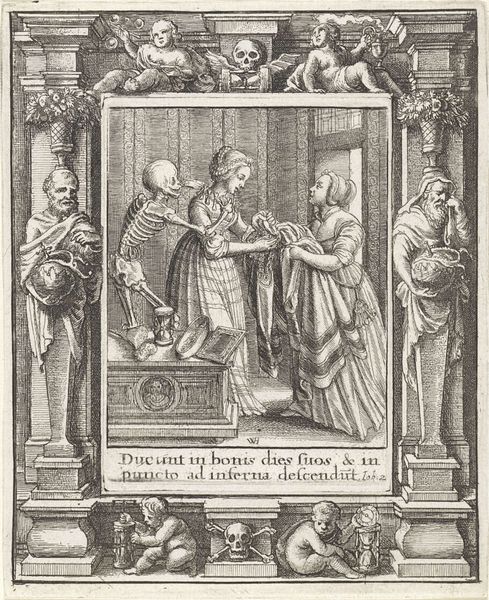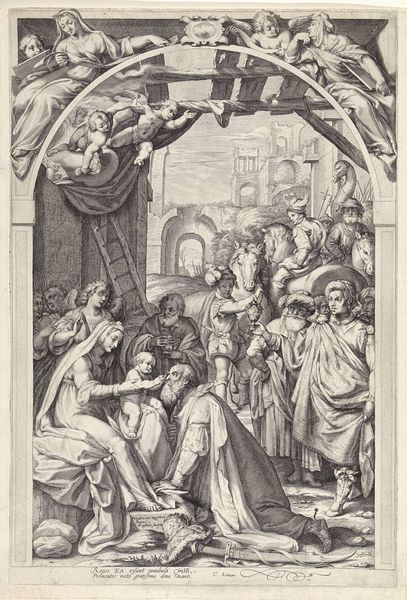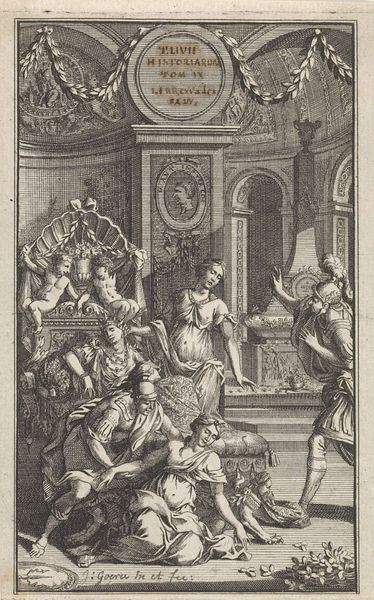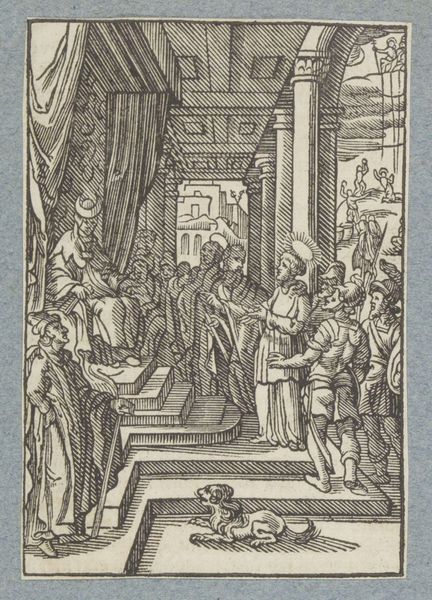
print, engraving
#
portrait
#
allegory
#
baroque
#
pen drawing
# print
#
figuration
#
vanitas
#
chiaroscuro
#
line
#
history-painting
#
engraving
Dimensions: height 115 mm, width 95 mm, height 76 mm, width 55 mm
Copyright: Rijks Museum: Open Domain
Curator: Wenceslaus Hollar's "The Pope and Death", crafted in 1651, is an intriguing piece, currently housed at the Rijksmuseum. It is realized as a meticulously detailed engraving. Editor: My first impression is of a rather bleak stage production. There is this very calculated arrangement of figures around a central, seated Pope, and Death prominently featured as if it’s another member of the court. Curator: Yes, it's very staged. Note the precise lines of the engraving and the heavy symbolism loaded within the composition. The image itself, produced using engraving techniques of the period, makes it infinitely reproducible, impacting its circulation and consumption as propaganda. How does the historical context shape your understanding? Editor: It feels incredibly weighted by the politics of its time. Considering Hollar's era and the religious tensions across Europe, I view this work as a visual commentary on papal authority, with Death as the great leveler. Curator: The very materials utilized – copper plates, engraving tools, paper, and ink – dictated the nature and spread of images. We also need to think of the cost of producing the plates and prints, their intended market and audience. Did this make Hollar's work more widely accessible and democratic? Editor: Potentially, printmaking allowed for wider distribution compared to unique paintings. It undoubtedly fueled discourse, especially as the image confronts religious hierarchy and the inevitability of death. It invites a critical reflection on power. Curator: And what of the consumption? Were these affordable to a wide swathe of society, or more targeted at wealthy collectors or institutions, hence reinforcing certain power structures? The medium impacts the message and reception. Editor: It’s likely that, given Hollar’s patronage system, these were directed to influence powerful circles, maybe as satirical social commentary in intellectual circles. Consider how it circulates through court. Curator: Absolutely. It underscores how material constraints shape social and political expression, as opposed to just artistic intention. Editor: It highlights how Hollar skillfully leveraged image-making to comment on his world. The Pope and Death certainly encourages me to examine the socio-political forces at play when viewing art from any era.
Comments
No comments
Be the first to comment and join the conversation on the ultimate creative platform.
